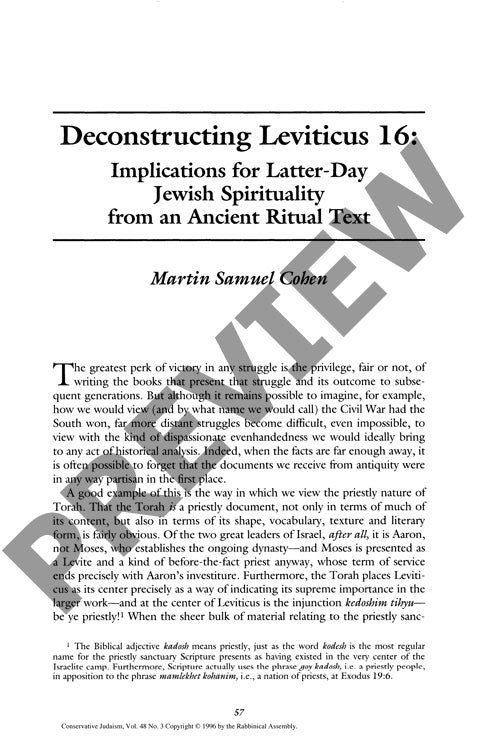Deconstructing Leviticus Implications
Couldn't load pickup availability
Ancient Israelite religion preserved a fascinating tension between two competing sacred spaces: the centralized Tabernacle (mishkan) representing priestly authority, and the peripheral Tent of Meeting ('ohel mo'ed) embodying prophetic tradition. Through deconstructive analysis of Leviticus 16, this research reveals how these distinct sanctuary traditions coexisted and competed for religious legitimacy. Close textual analysis demonstrates that while Torah presents a unified narrative, it actually encompasses rival religious paradigms, with priestly sources ultimately gaining precedence over prophetic traditions. Leviticus 16 uniquely acknowledges both sanctuaries as separate, simultaneous entities, presenting Aaron's ritual purification of both shrines as essential for maintaining divine presence and communal atonement. This represents a sophisticated priestly polemic establishing the priest's indispensability even to prophetic spirituality, despite Moses' superior intimacy with the divine. The research concludes that contemporary Jewish spiritual life continues to reflect this ancient tension between prophetic hearing/studying of divine word and priestly seeking of God through ritual action, suggesting that modern Jews remain heirs to specifically priestly traditions within the broader spectrum of ancient Israelite religion, with significant implications for understanding the relationship between study and practice in Jewish religious life.

More Information
-
Physical Description
-
Publication Information
Published 1996
ISBN
-
Publication Credits
Martin Cohen

